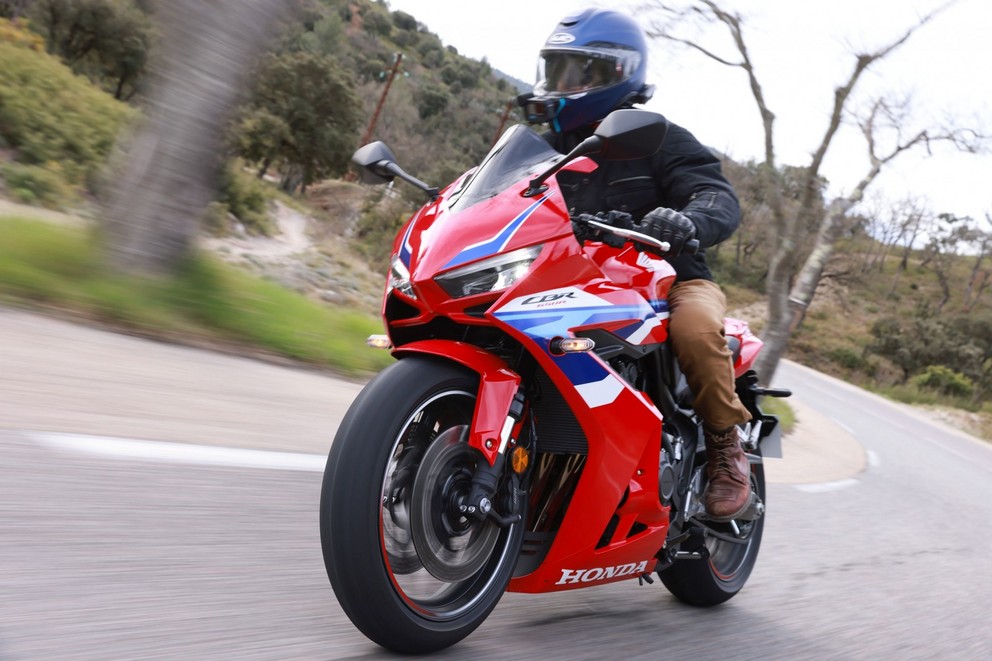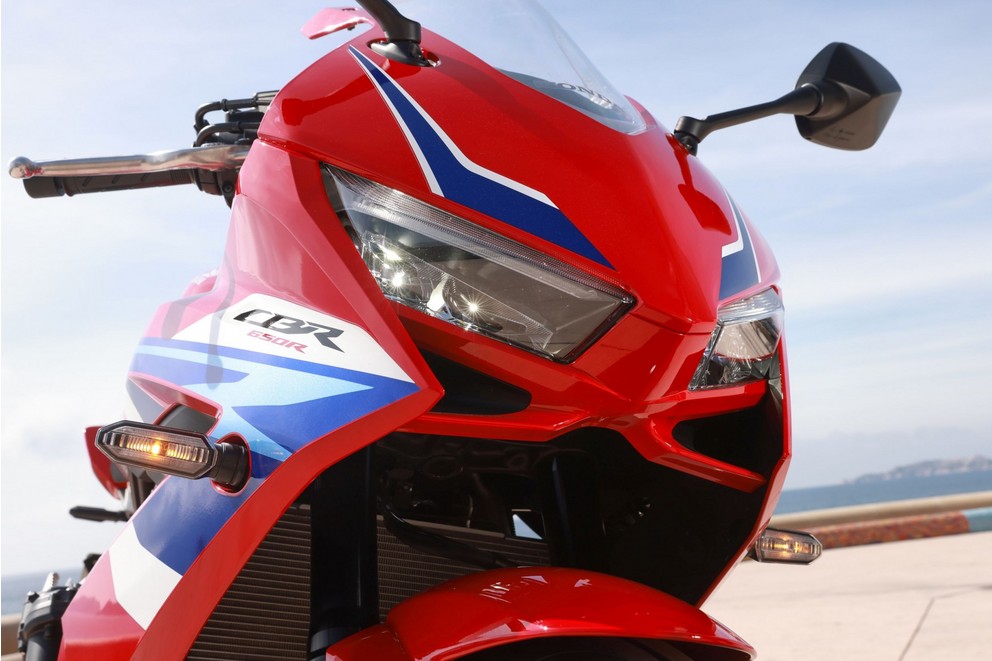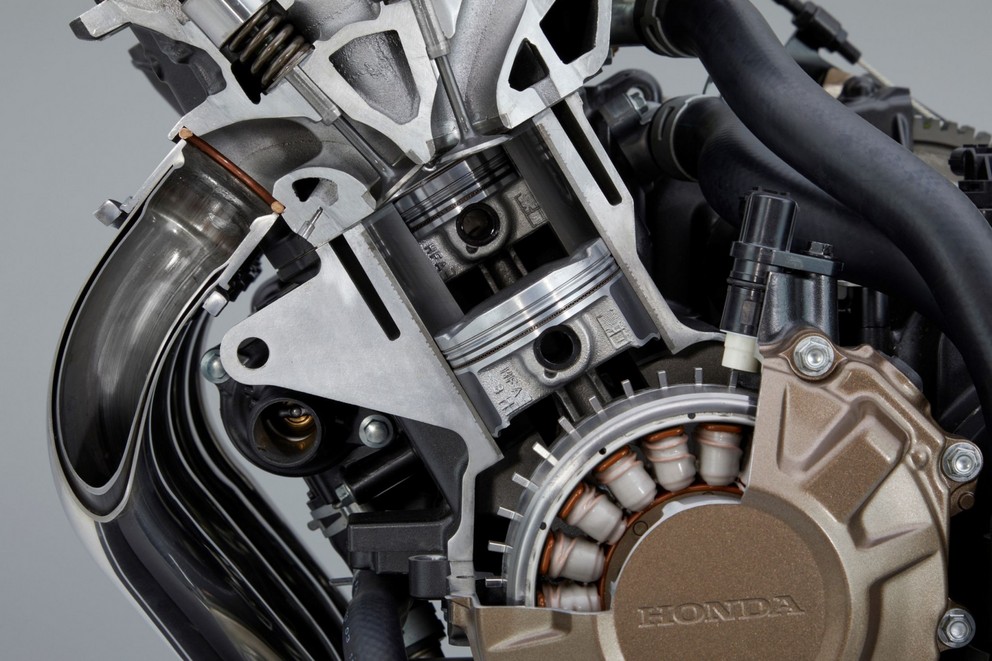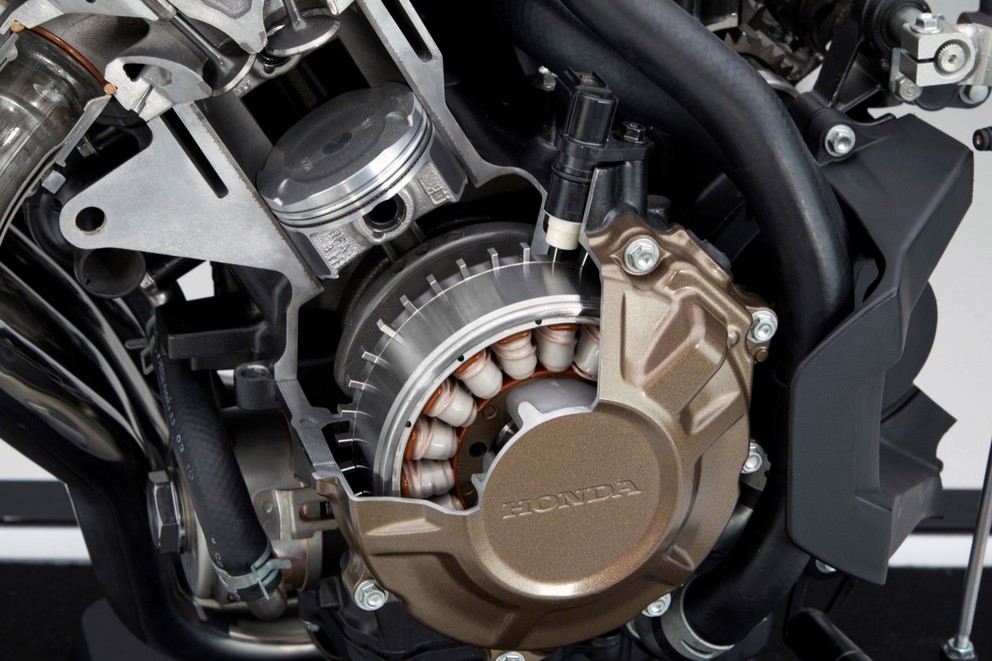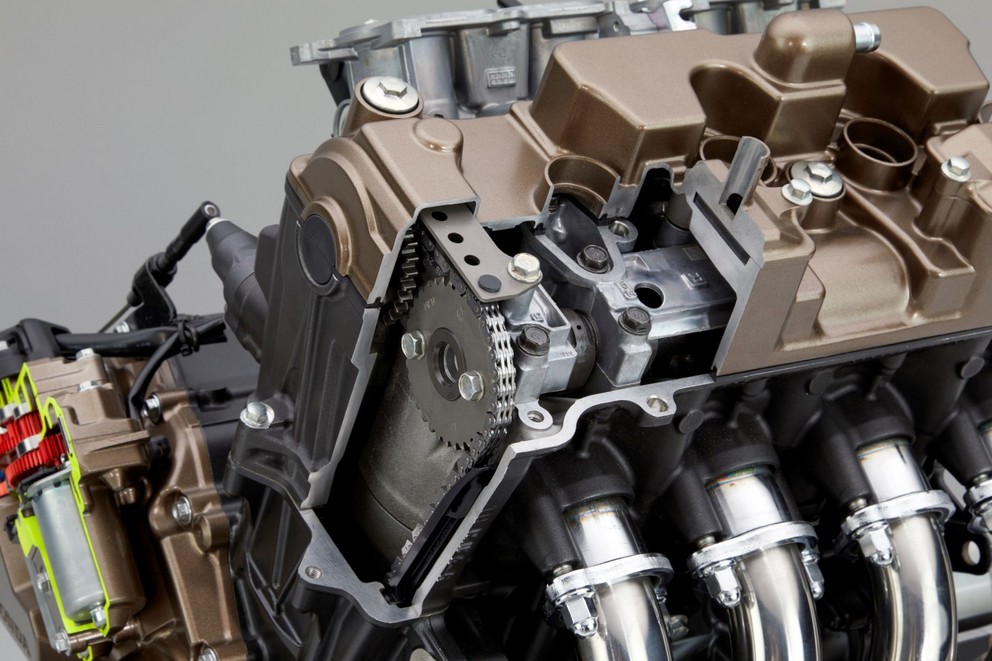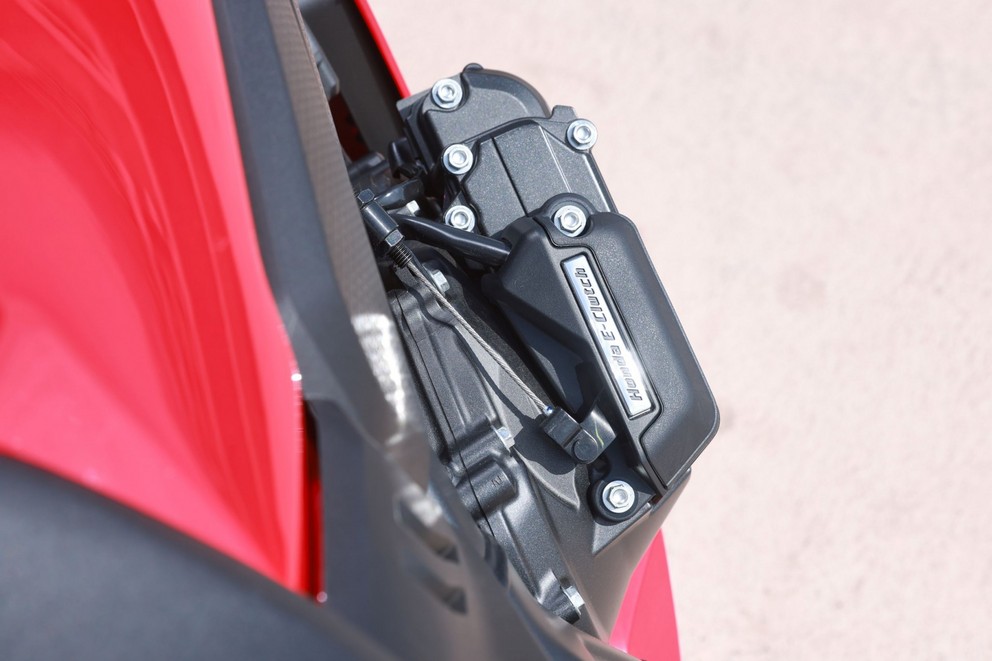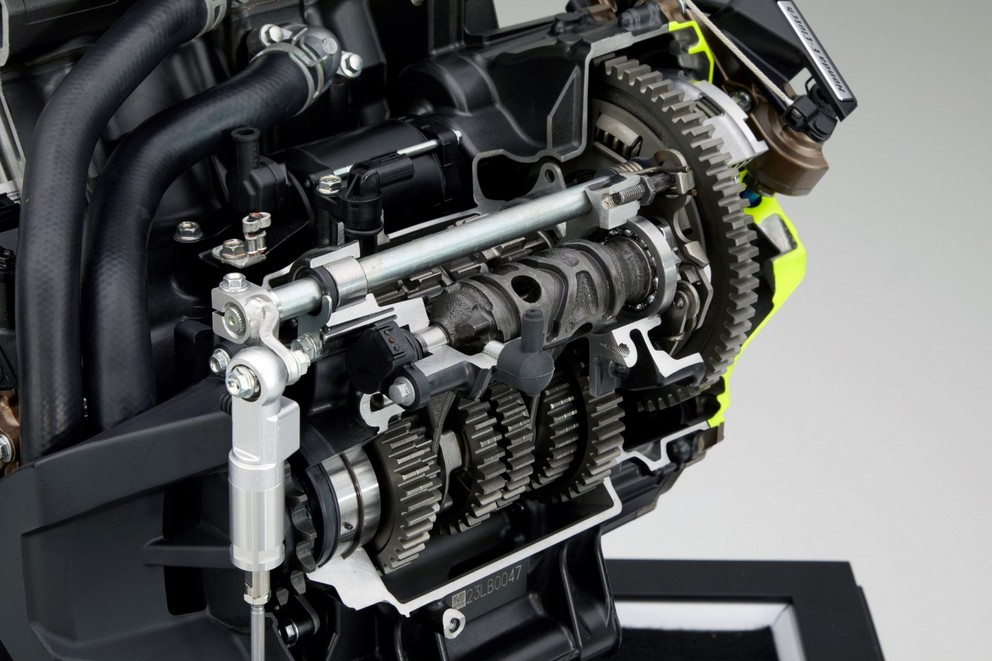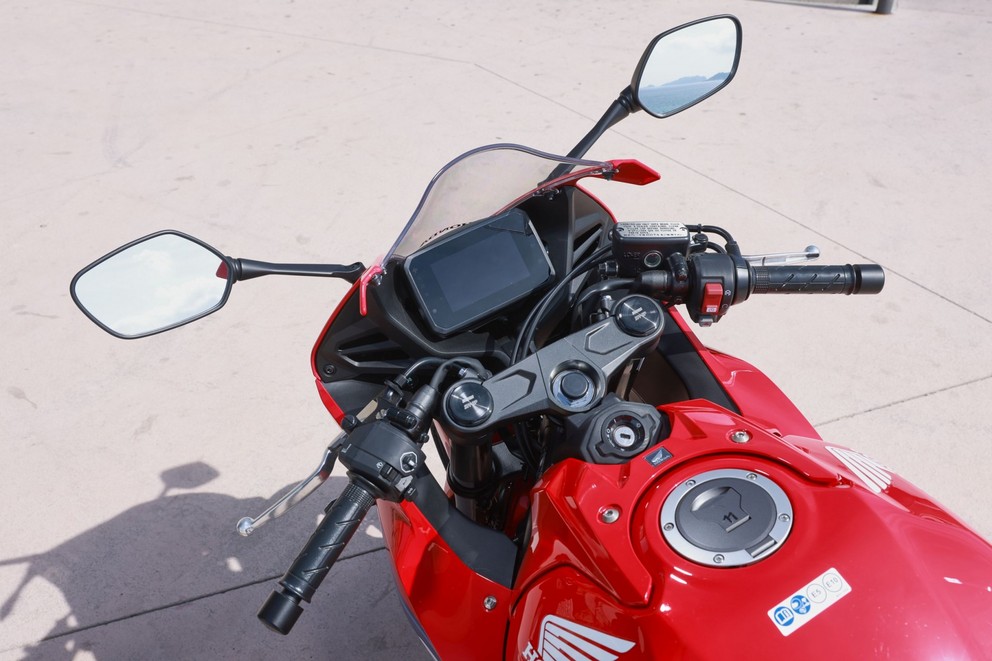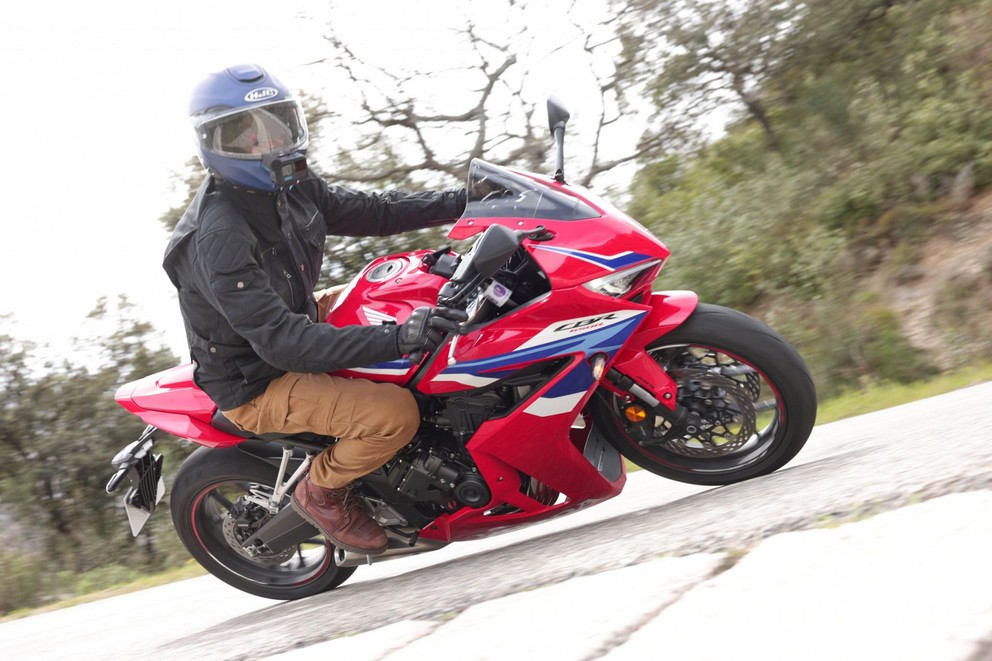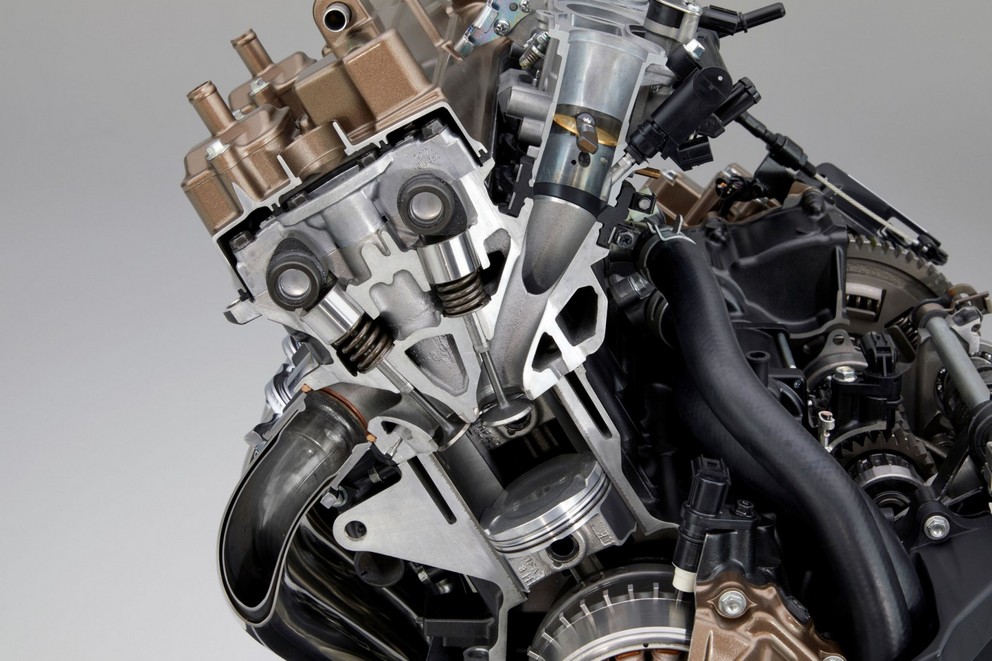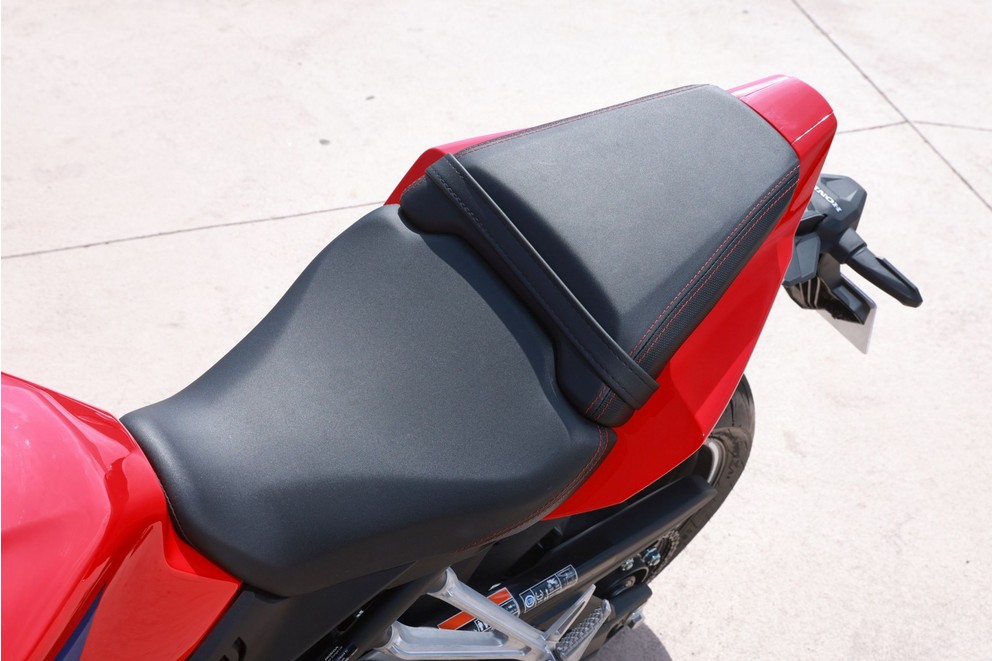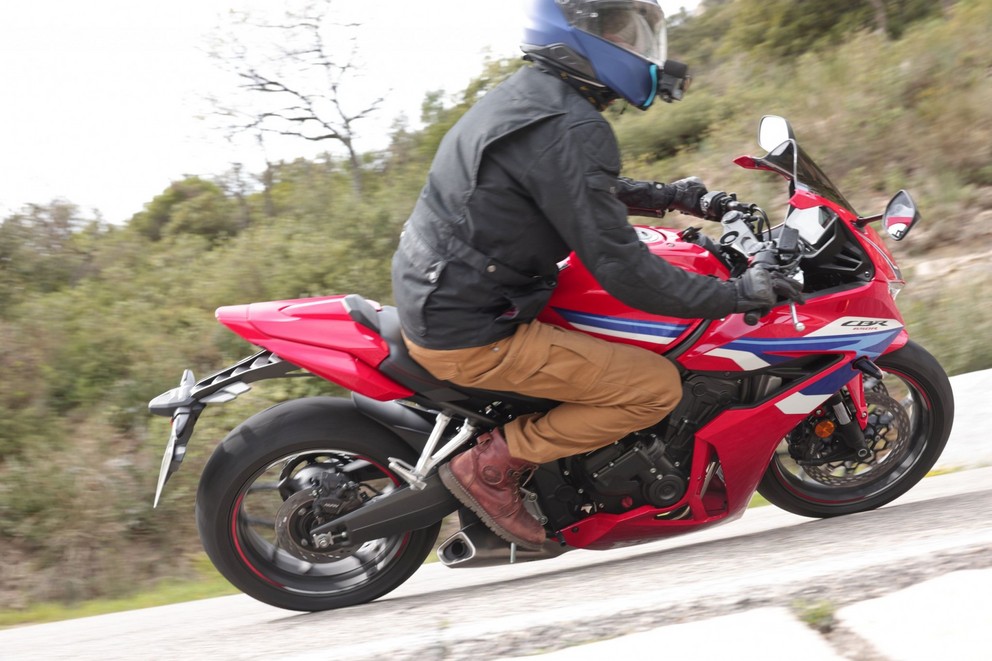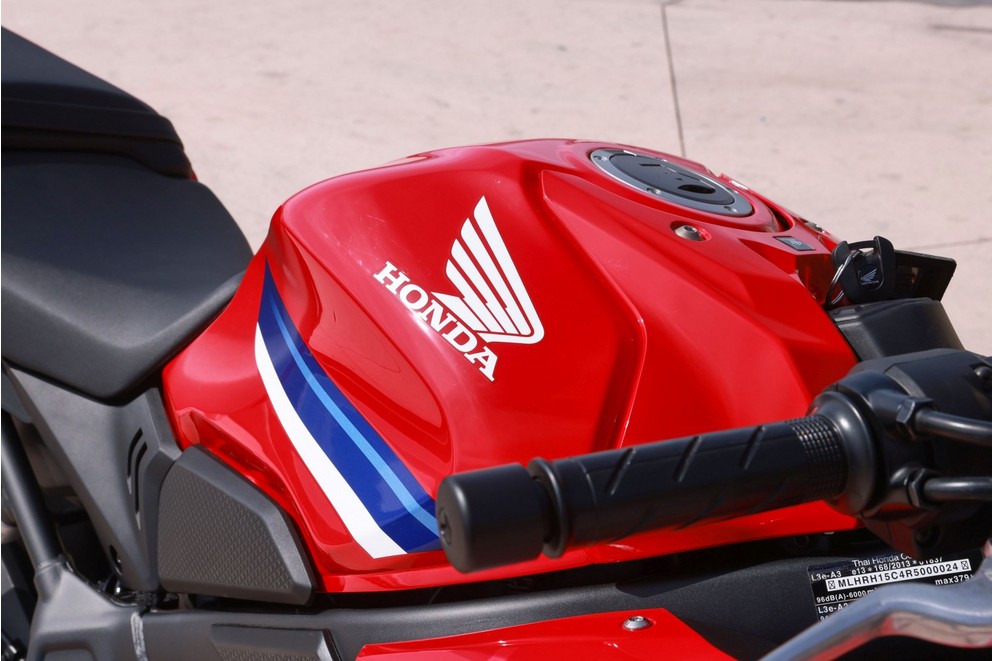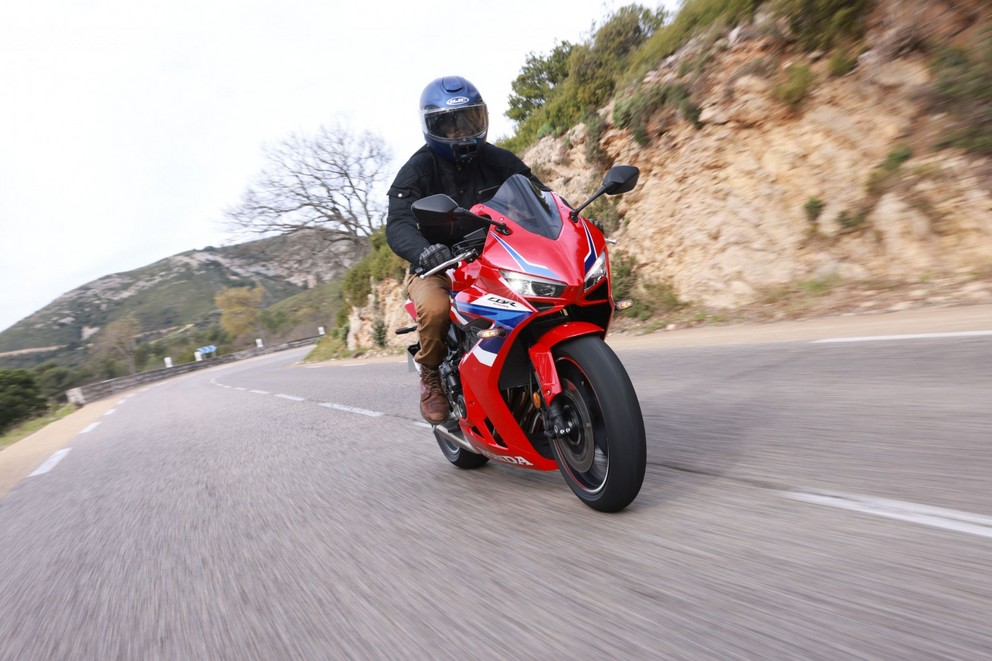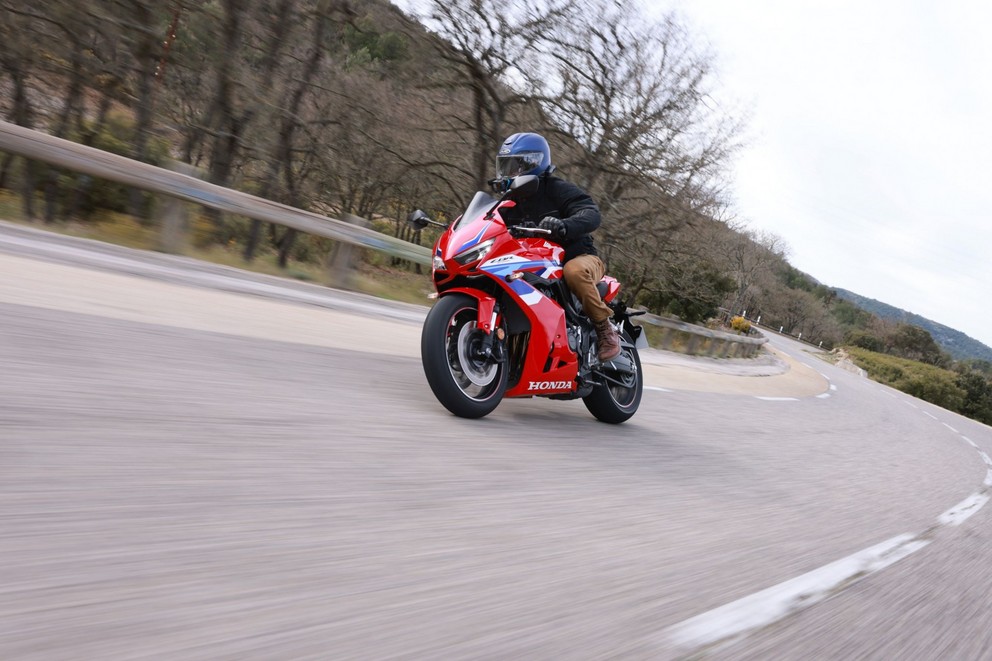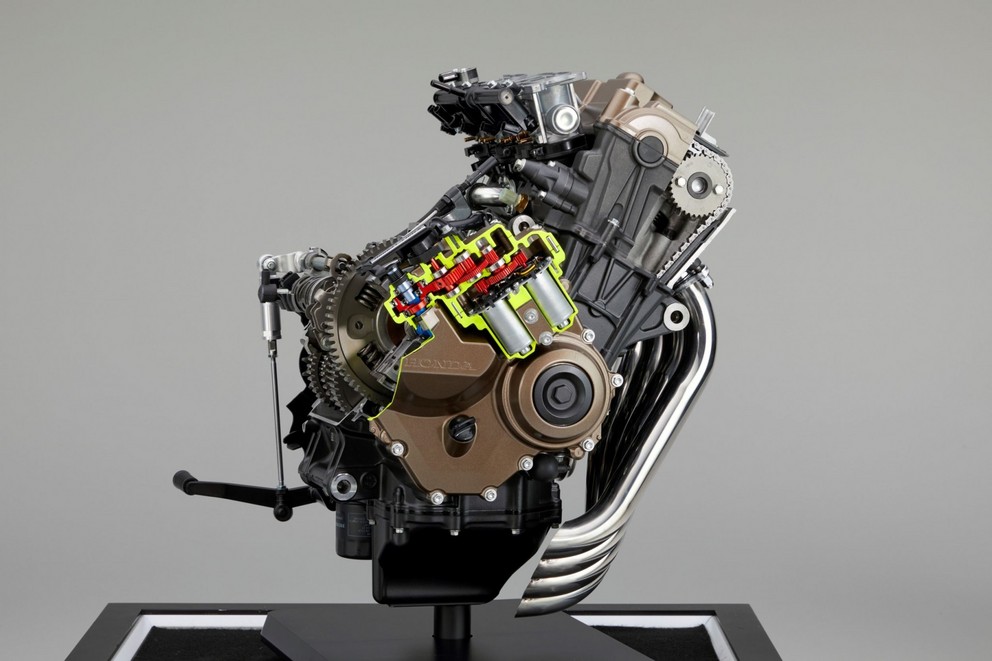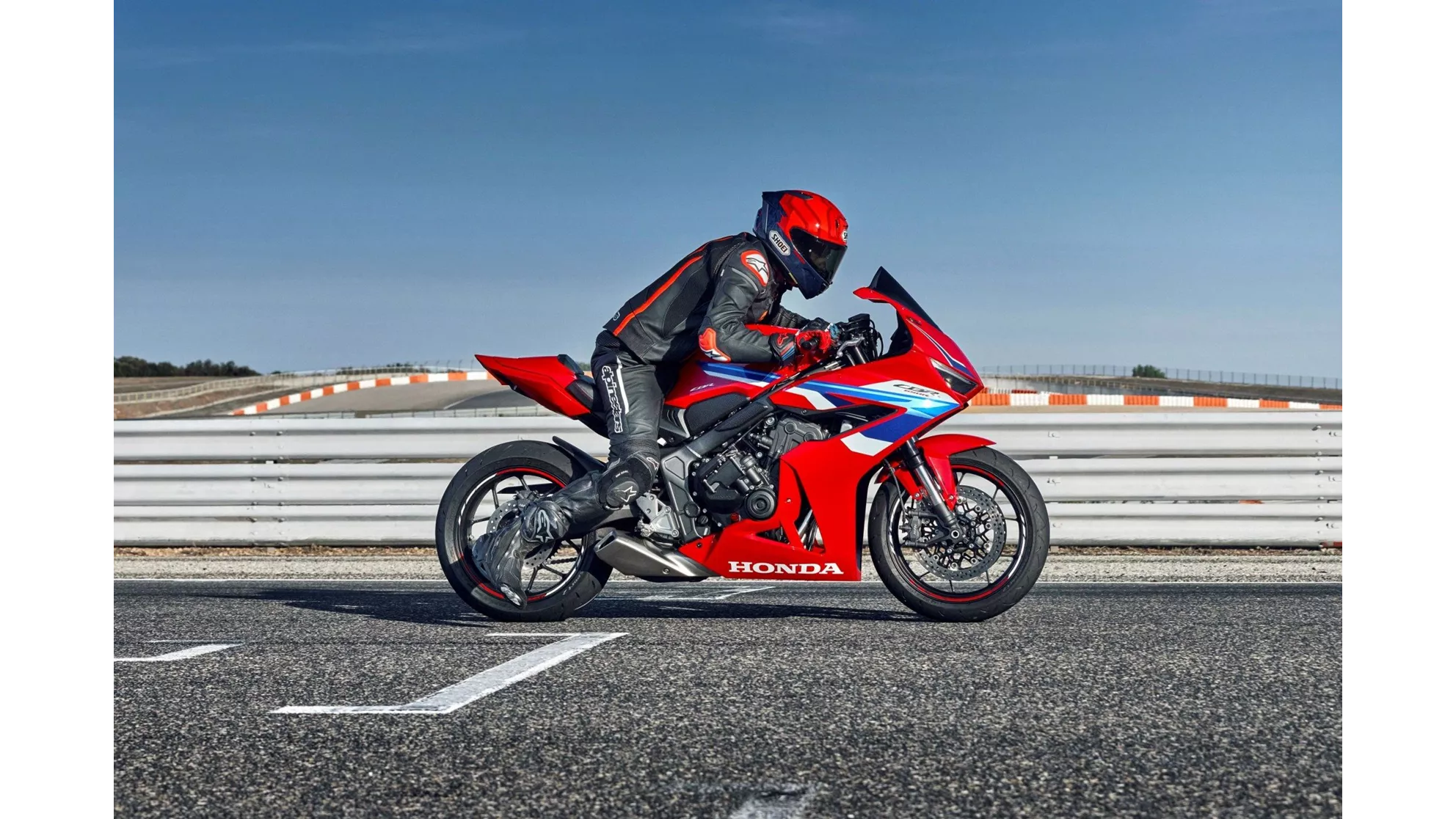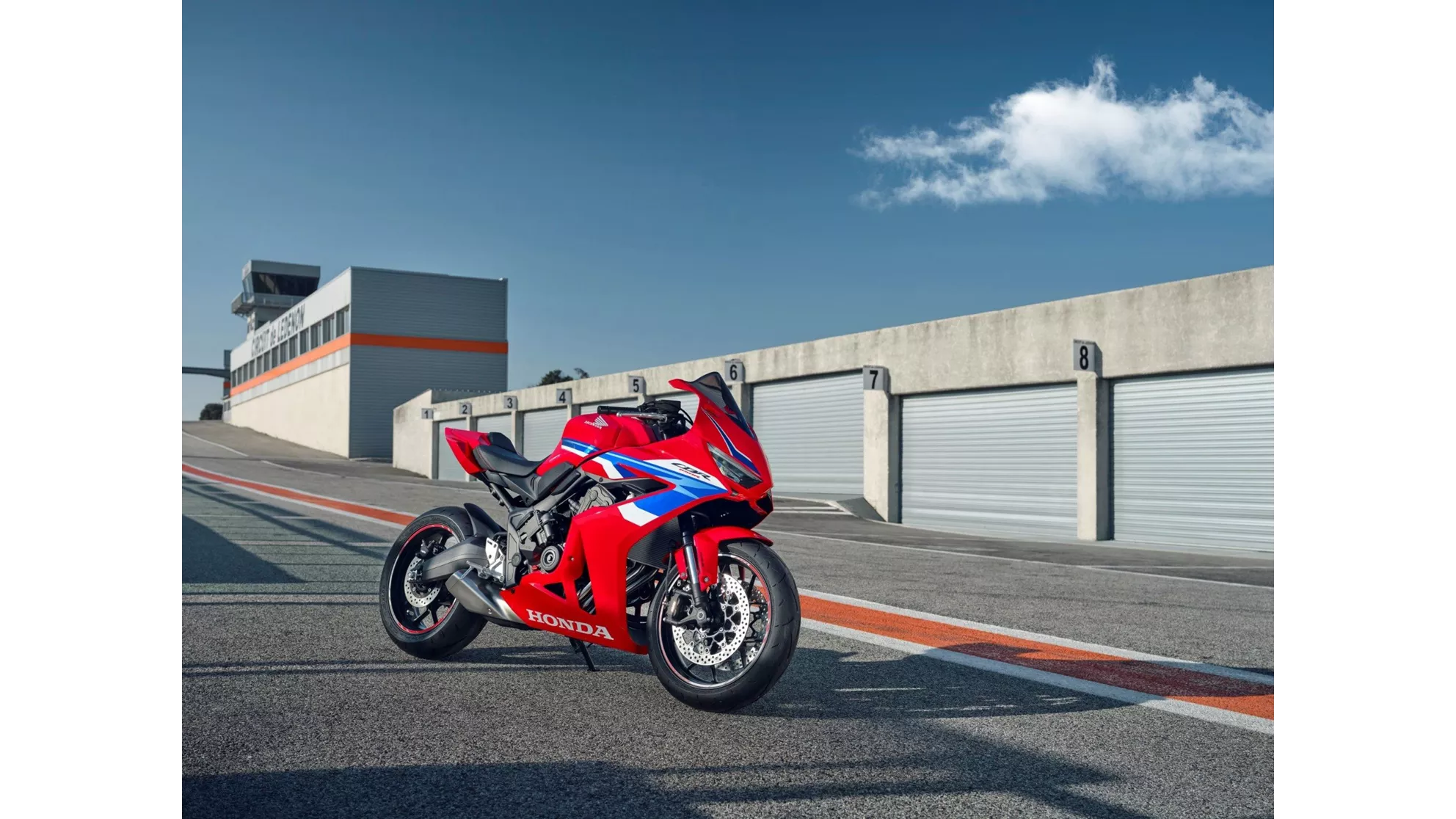After 50 years of being the world's largest motorcycle manufacturer, Honda continues to push the boundaries with their latest innovations. The E-Clutch, touted as a revolutionary feature, is it truly a game-changer or just a fancy technical gadget? And what updates can we expect on the CBR650R?

Honda CBR650R E-Clutch Test 2024
How does the new CBR and electronic clutch perform in practice?
After the successful DCT, the Japanese engineers are presenting another unique, potentially market-changing technology: The E-Clutch, an electronically controlled clutch. The new CBR650R has been equipped with it and we were able to find out around Marseille how well the mid-range super sports bike and the new technology work in practice.
&width=72&height=72&bgcolor=rgba_39_42_44_0&mode=crop)
Gregor
published on 3/27/2024
Honda CBR650R 2024 innovations and update
What's new on the Honda CBR650R? The core components remain unchanged, with only minor adjustments made. The 649 cc inline four-cylinder engine still produces 95 hp at 12,000 rpm and 63 Nm of torque at 9,500 rpm. However, the intake system and intake valve timing have been revised for improved performance. This results in a slight increase in torque at lower revs and a 5% power boost at higher speeds. The chassis has also been subtly updated, with the Showa Big Piston USD fork now offering improved damping for a more comfortable ride over bumps without compromising sporty handling. The most noticeable changes are the redesigned fairing, LED headlight, rear section, and seat. Additionally, a sleek TFT display has been added along with revamped handlebar controls and switches. Lastly, the groundbreaking E-Clutch System makes its debut on the CBR650R, offering innovative functionality. But how does it actually work?
Honda CBR650R E-Clutch 2024 - Key Facts
Engine and Drive Train
| Bore | 67 mm |
|---|---|
| Stroke | 46 mm |
| Engine power | 95 HP |
| Rpm at Max. Power | 12000 rpm |
| Torque | 63 Nm |
| Rpm at Torque | 9499.99 rpm |
| Compression Ratio | 11.6 |
| Starter | Electric |
| Clutch Type | Multiplate in oil-bath |
| Ignition | Digital, Transistor |
| Transmission Type | Gearshift, Semi-automatic |
| Valves | DOHC |
| Displacement | 649 ccm |
Suspension Front
| Technology | Big Piston |
|---|---|
| Diameter | 41 mm |
| Travel | 120 mm |
Suspension Rear
| Shock absorber | Monoshock |
|---|---|
| Travel | 128 mm |
| Adjustment | Preload |
Chassis
| Frame type | Twin Tube |
|---|---|
| Rake | 64.5 degree |
| Trail | 101 mm |
Brakes Front
| Diameter | 310 mm |
|---|---|
| Technology | radial |
Brakes Rear
| Diameter | 240 mm |
|---|
Assistance Systems
| Advanced Rider Assistance Systems | ABS |
|---|
Dimensions and Weights
| Front tyre width | 120 mm |
|---|---|
| Front tyre height | 70 % |
| Front tyre diameter | 17 inch |
| Rear tyre width | 180 mm |
| Rear tyre height | 55 % |
| Rear tyre diameter | 17 inch |
| Length | 2120 mm |
| Width | 750 mm |
| Height | 1150 mm |
| Wheelbase | 1450 mm |
| Seat Height | 810 mm |
| Kerb Weight (with ABS) | 211 kg |
| Fuel Tank Capacity | 15.4 l |
| License compliancy | A |
| Range | 353 km |
| Combined CO2 emissions | 112 g/km |
| Combined fuel consumption | 4.9 l/100km |
| Stationary noise | 97 dB |
Equipment
| Equipment | LED daytime running lights, LED-Headlights, TFT display |
|---|
Honda E-Clutch structure and function explained - Test 2024
In contrast to the DCT, the E-Clutch is not a completely new technology in the motorcycle sector, but actually a combination of already known technologies. This statement is in no way intended to diminish the achievements of the Japanese developers, but rather to help us laymen understand the new technology. The E-Clutch system combines the familiar technologies of modern shift assistants, a conventional multi-disc clutch in an oil bath and the electronic clutch control from the DCT. The result is a control unit weighing only approx. 2 kg directly at the upper end of the clutch cover on the right-hand side of the engine. The clutch is electronically disengaged and re-engaged at the right time via an actuator unit with two servomotors. This is where the electronic readout of various parameters, which is also common in modern motorcycles, comes into play. Speed, throttle position, engine speed, the input via the foot control, the gear position and the position of the clutch plates are taken into account and the ignition and fuel injection are also controlled accordingly when engaging and disengaging the clutch. This should not only enable seamless, smooth, jolt-free gear changes, but also automatically take over the clutch when moving off and coming to a standstill. However, manual control of the clutch is also possible at any time. How does driving with this new technology feel in practice?
Honda CBR650R E-Clutch Test 2024 - How much comfort does the super sports bike with electronic clutch offer?
The engineers at Honda have prioritized comfort, user-friendliness, and sporty performance for the Honda Supersport. Let's first examine the CBR and then the E-Clutch, as the CBR650R is a mid-range supersport motorcycle designed for spirited rides on country roads. It must strike a balance between comfort and sportiness, much like the E-Clutch. The bustling city traffic in and around Marseille serves as the initial testing ground.
The handlebars on the Honda Supersport are slightly raised, providing a sporty knee angle without being too extreme. Similar to other mid-range supersport motorcycles like the Suzuki GSX-8R and Yamaha R7, the Honda Supersport maintains accessibility while delivering a true supersport experience. Setting it apart from the competition is its classic in-line four-cylinder engine, giving it a unique edge. The engine's smooth throttle response is a standout feature, offering power delivery that is both smooth and predictable. At just 211 kg, the Honda Supersport is easy to maneuver through traffic, with the engine emitting a pleasing hum at lower RPMs. Thanks to its flexible gears, cruising at low speeds is effortless when the road is clear. These comfort features, consistent with last year's model, are further enhanced by the E-Clutch, taking comfort to a new level.
Once the Honda Supersport is started, the engine immediately kicks in. When the gearbox is in neutral, the e-clutch is activated. To shift gears, simply press the gearshift lever and release your hands. Then, gently twist the throttle and the CBR is ready to go. Depending on how much you twist the throttle, the bike can accelerate quickly or slowly. It may take some time to get used to the precise throttle control and the E-Clutch, but soon enough I was confidently weaving through Marseille without ever needing to touch the clutch lever. You don't even have to pull the clutch in when coming to a stop - the electronic system takes care of that, so stalling is no longer an issue with the E-Clutch. Even if you stop in a gear that's too high and then try to take off again, the system can handle it. Starting off in 6th gear is surprisingly smooth, but it's best not to do it too often to avoid putting too much strain on the clutch, just like you would with manual control. The system also provides a visual warning if you're in too high a gear for your speed, with an orange gear indicator and downward arrows on the display. And that leads us to the next point, the controls.
Finally an intuitive operating concept on a Honda - Honda CBR650R E-Clutch in the 2024 test
Praise the heavens, at last a Honda Supersport with an intuitive operating system. The new TFT display is not just a visual enhancement and provides smartphone connectivity; the menu navigation through the new illuminated gauges and a 4-way switch is also a fresh and user-friendly feature compared to other Honda models (such as the Fireblade, Africa Twin & Transalp). It's true that the CBR650R doesn't offer a plethora of customization options, lacking riding modes and featuring basic traction control and ABS. Nevertheless, the straightforward operation of the E-Clutch system is a definite advantage.
The electronic clutch control on the Honda Supersport can be deactivated by simply pulling the hand lever. At low speeds, the E-Clutch re-engages 5 seconds after the last clutch lever operation, and after one second at higher speeds. This allows for unrestricted maneuvering where manual clutch control is preferred (fine metering, wheelies, etc.). If you prefer classic clutch control and want to avoid constant deactivation and reactivation of the E-Clutch, you can switch the system off permanently. In manual mode, the Honda Supersport rides like any other motorcycle with a conventional clutch. Additionally, the E-Clutch offers adjustment options for gear changes with lightning-fast half-opening of the clutch, allowing you to customize the feel of the shift lever between Hard, Medium, and Soft as needed. You can even adjust this independently for upshifts and downshifts. I personally prefer the hard setting for a rich, clear feedback from the gearbox.
Honda CBR650R E-Clutch 2024 Test - Great four-cylinder feeling for sporty riding
We finally escape the hustle and bustle of Marseille and take on the winding mountain roads. The highlight once again is the four-cylinder engine of the Honda CBR650R. While the subtle increase in power compared to the previous model may not be immediately noticeable, the CBR still shines with its classic in-line four character. This translates to gentle power delivery at low revs, a smooth throttle response, eager revving, a progressively louder four-cylinder sound, and ultimately reaching peak power in the upper third of the rev range. When it comes to acceleration, the CBR650R may lag behind other mid-range supersport bikes with in-line two-cylinder engines, but few bikes in its class can match the sheer enjoyment and supersport sensation that the CBR650R provides when pushing through the gears. The engine also excels in cornering thanks to its precise and finely-tuned performance. Additionally, the Nissin brakes, with their 310 mm dual discs and radial four-piston caliper at the front, offer a relaxed feel for easy cruising with a soft initial bite, yet can also provide strong, controlled braking with just the right amount of force for more spirited riding. The fork is sturdy, offers excellent feedback from the road, and instills confidence in cornering as long as the road surface is relatively smooth. However, the suspension, particularly the rear shock, struggles to absorb minor bumps during aggressive cornering and on uneven roads.
On the flip side, the E-Clutch system allows for seamless gear changes on the Honda Supersport, even when leaning at extreme angles. The inline four engine and E-Clutch work in perfect harmony, providing a smooth ride on winding roads. Whether you're cruising leisurely or pushing the limits in hairpin turns, the E-Clutch effortlessly adjusts to the situation. When you need to accelerate, whether passing another vehicle or leaving a town behind, shifting up to the higher rev range is a breeze. And here's where the E-Clutch truly shines: it allows for upshifting without load and downshifting under full throttle, a feature not found in quickshifters from other brands like Yamaha or KTM. The downshifting experience, especially with the throttle open, is a joy to behold. Imagine riding behind a slow-moving truck, spotting an opportunity to pass, downshifting with a few quick taps of the gearshift, and feeling the engine roar as you surge ahead in the optimal rev range, accompanied by the symphony of the four-cylinder engine. It's a truly exhilarating experience! Despite the innovative E-Clutch technology, the combination of the Honda Supersport and E-Clutch delivers an intuitive and seamless riding experience on spirited country roads.
Advantages and disadvantages of the Honda E-Clutch system
Honda's new technology has received nothing but praise so far. The benefits are clear: improved city traffic comfort with clutch-free operation, eliminating the risk of engine stalling and allowing for seamless gear changes. Additionally, it provides a more dynamic performance with quicker and smoother gear shifts, enabling gear changes at any throttle position. As for drawbacks, getting used to operating the E-Clutch may take some time, but this is expected with a new system and is not a real downside. Furthermore, since the system can be deactivated at any time and does not interfere with traditional clutch control, I see no disadvantages. The E-Clutch offers great flexibility without imposing any restrictions on the rider.
What are Honda's plans for the new E-Clutch system?
At present, there is only one version of the Honda CBR650R and CB650R with E-Clutch, but this is likely to change soon. When considering DCT technology, the E-Clutch shows significant potential. In fact, DCT is highly popular on similar models. 90% of all Goldwings, 70% of all Africa Twin Adventure Sports models, and 50% of all NC750 motorcycles come equipped with it. However, the E-Clutch is more cost-effective than DCT and can be easily integrated into existing models, as it can be paired with traditional clutches. When I inquired with Japanese technicians and developers about the future of E-Clutch, they remained tight-lipped, as expected. They mentioned that they will assess the sales performance of the E-Clutch versions of the CBR650R and CB650R over the next 6 months before making any decisions. What about long-term use? During testing, it was discovered that the E-Clutch exerts similar pressure on the clutch plates as a skilled rider would. This means there are advantages in terms of wear for less experienced riders.
Prices & price comparison of the Honda E-Clutch models 2024
How much does the E-Clutch system cost for the Honda Supersport models? Currently, it is priced between €400 and €500 more than the standard versions. In Austria, the Honda CB650R is priced at €9,690, while the CB650R with E-Clutch costs €10,190. The Honda CBR650R is available for €10,690, and with E-Clutch, it is priced at €11,190. For Swiss pricing of the E-Clutch models, please refer to this link, and for German pricing, check here.
- How much does a Honda CBR650R E-Clutch cost?
- Here you will find an overview of the price level of new and used motorbikes!
&width=60&height=60&bgcolor=rgba_39_42_44_0&mode=crop)
Honda CBR650R E-Clutch 2024 - Experiences and Expert Review
Gregor
The Honda CBR650R is a great mid-range supersports bike for the country road, which manages the balancing act between sportiness and accessibility very well. But other bikes in this class also manage this. What makes the CBR special is the old-school in-line four-cylinder engine at its heart. You won't win any acceleration races with it, but the in-line four inspires with its silky power delivery and screaming revs in the upper rev range. And with the new E-Clutch technology, you can get the most out of the engine with crisp gear changes and massively increase comfort in city traffic thanks to the electronic operation of the clutch.
Honda CBR650R E-Clutch Test 2024 Images
Source: 1000PS
